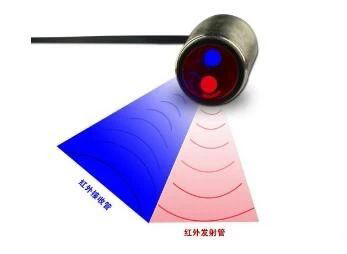-
您的位置:
- Home page
- > The solution
- > Problems

您的位置:
Infrared sensor
Infrared, also known as infrared light, has the properties of reflection, refraction, scattering, interference, absorption and so on. Any substance can radiate as long as it has a certain temperature (above absolute zero)
Infrared.
The essence of infrared radiation is thermal radiation. In the form of waves in the form of straight line propagation in space, the speed of light propagation in the vacuum when the temperature of the object is lower than 1000 ° C, the outward radiation is no longer visible light, but infrared light infrared light through the atmosphere, there are three bands with high transmittibility, they are 2~ 2.6uM, 3~ 5uM and 8~ 14uM.
Infrared sensor is a kind of sensor that can sense the infrared radiation of the target and use the physical properties of infrared to measure. Infrared sensing system is a measurement system using infrared as the medium, according to the function can be divided into five categories:
(1) Radiometers for radiation and spectral measurements;
(2) a search and track system for searching and tracking infrared targets, determining their spatial position and tracking their movements;
(3) Thermal imaging system, can produce the entire target infrared radiation distribution image;
(4) infrared ranging and communication systems;
(5) Hybrid system refers to the combination of two or more of the above types of systems.

Infrared sensors can be divided into photon detectors (based on the photoelectric effect) and thermal detectors (based on the thermal effect) according to the detection mechanism.
(1) The thermal detector uses the thermal effect of infrared radiation, and the sensitive element of the detector causes the temperature to rise after absorbing radiation energy, which then changes some relevant physical parameters and passes the measurement
The parameter changes to determine the infrared radiation absorbed by the detector.
(2) The photon detector uses the photon flow of incident light radiation to interact with the electrons in the detector material, thereby changing the energy state of the electrons and causing various electrical phenomena.
Infrared sensor application
Infrared sensors are often used for contactless temperature measurement, gas composition analysis and non-destructive testing, and are widely used in medicine, military, space technology and environmental engineering.
(1) Flame detector (2) infrared thermometer (3) infrared imaging
The infrared sensor is a very important part of the infrared detection system, but it is very delicate, if you do not pay attention to the use of the infrared sensor may cause damage. Therefore, the infrared sensor should pay attention to the following points in use:
(1) We must first pay attention to understand the performance indicators and application range of infrared sensors, and master its conditions of use.
(2) We must pay attention to the working temperature of the sensor, and generally choose an infrared sensor that can work at room temperature, which is easy to maintain
(3) Properly adjust the working point of the infrared sensor. In general, the sensor has an optimal operating point. Only when the infrared sensor is working at the best working point, the signal-to-noise ratio is the largest.
(4) The appropriate preamplifier is selected to cooperate with the infrared sensor to obtain the best detection effect.
(5) The modulation frequency matches the frequency response of the infrared sensor.
(6) The optical part of the sensor cannot be touched or rubbed by hand to prevent damage and contamination.
(7) When the sensor is stored, pay attention to moisture, vibration and corrosion prevention.